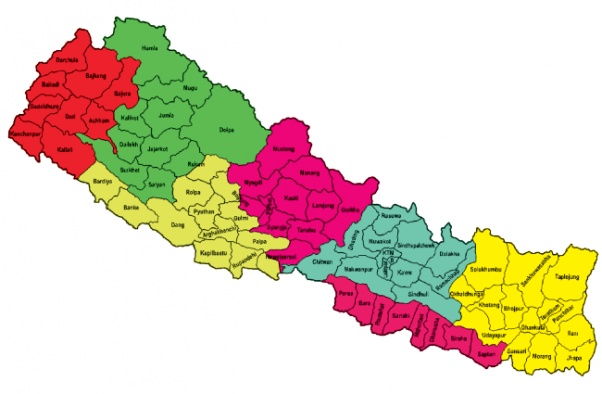Threshold for healthy politics and stable governance
 Manoj Karki (Kathmandu) / Feb 8: Nepal at present is gearing up for three major elections that would change the face of leadership in the new federal set up of the country.
Manoj Karki (Kathmandu) / Feb 8: Nepal at present is gearing up for three major elections that would change the face of leadership in the new federal set up of the country.
Notwithstanding the ongoing tussle between amendment to the new constitution and elections, the latter is inevitable as it is a constitutional requirement that must be met by the parties and the government. As per the new constitution, elections to the legislative in all three tiers of federal Nepal must be held by January 2018.
Accordingly, the government has accelerated the passing of election-related laws. Laws related to the Election Commission, voters’ roll, election offense and punishment and local elections have been passed. And the law relating to political parties is on the verge of being passed by the parliament.
The most disputed matter in the law relating to political parties has been that of maintaining threshold of votes for representation. While the major parties including the ruling CPN (Maoist Centre), Nepali Congress and the main opposition CPN-UML as well as the RPP have been favour of a threshold, many other parties especially the fringe parties are against it.
The call for a threshold has also been widespread in the social media too following the recent appointment as Ministers of two one-member-party Members of Parliament. In his effort to garner support for the constitution amendment bill registered in the parliament and continue the required support for his government, Prime Minister Pushpa Kamal Dahal appointedPrem Bahadur Singh of Samajwadi Janata Party and Kumar Khadka of Akhanda Nepal Party as Minister of Water Supply and Sanitation and Women, Children and Social Welfare respectively.
Hence, its more than obvious for the fringe parties to protest any percentage of threshold to be qualified as a national party or representation in the parliament. Many Madhesh-based parties too have benefitted despite dividing into many break-away groups for lack of a threshold to be recognized as a political party.
The argument against a threshold is that it would deny inclusion of certain groups, especially the marginalized and the unrepresented communities. However, it is evident since the first Constituent Assembly that the mushrooming of fringe parties with a member or two in the parliament has given rise to more anomalies than inclusion or representation. Majority of such parties have been confined to family and kinship. Furthermore, ruling parties have been compelled to give them ministerial berths, give rise to huge cabinets at the cost of national coffers and development.
The laurels won by fringe parties have also encouraged parties to divide and break up at will, mostly at the behest of individual and personal interests rather than on policy and principles.
In fact, proportional representation and inclusion can be realized through big parties that win more seats in the parliament. As in the past, fringe parties with less number of candidates in elections are not required to follow the principle of inclusion and proportional representation. However, it is mandatory for the big parties to follow all requirements of representation and inclusion right from the nomination of candidates. It was due to this that the number of women representation in the second constituent assembly decreased to around 28 per cent from the 33 per cent in the first CA.
Fringe parties mostly made up of seats won from the proportional representation of the mixed electoral system have flouted all norms of representation and inclusion. Many leaders appointed their spouses, in-laws and relatives, as they were not accountable to their voters. Nor were they concerned about them being voted again, as winning a handful of votes would give them a seat or two through the PR system.
It is however noteworthy that even the major political parties have misused the PR seats they won in elections by allegedly handing over parliamentary seats to businesspersons and traders.
Threshold that gives rise to a few number of political parties is also a must for good management of elections. The large number of political parties and their management has become a headache for the election commission. Accordingly, the commission itself has proposed a threshold ranging from 1.5 to 3 per cent. A total of 127 parties had contested the last CA elections, making it almost impossible for the EC to use electronic voting machine.
Political instability has been the major obstacle to Nepal’s development since the restoration of democracy in 1990, with no government as of yet completing a full term. The more the number of fringe parties elected, the more likelihood of unstable governments in power. Hence, threshold to limit the number of political parties is inevitable to ensure proportional representation and inclusion, to rid the country of political anomalies and above all give the country the much-needed political stability essential to move ahead towards the path to economic prosperity. RSS
